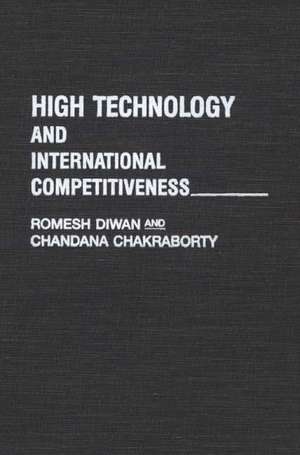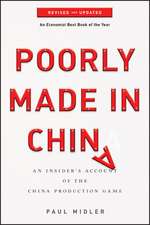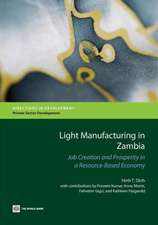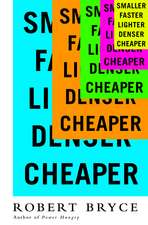High Technology and International Competitiveness
Autor Romesh Diwan, Chandana Chakrabortyen Limba Engleză Hardback – 29 noi 1991 – vârsta până la 17 ani
Preț: 438.93 lei
Preț vechi: 604.86 lei
-27% Nou
Puncte Express: 658
Preț estimativ în valută:
84.00€ • 87.37$ • 69.35£
84.00€ • 87.37$ • 69.35£
Carte tipărită la comandă
Livrare economică 14-28 aprilie
Preluare comenzi: 021 569.72.76
Specificații
ISBN-13: 9780275930325
ISBN-10: 0275930327
Pagini: 288
Dimensiuni: 156 x 235 x 18 mm
Greutate: 0.58 kg
Ediția:New.
Editura: Bloomsbury Publishing
Colecția Praeger
Locul publicării:New York, United States
ISBN-10: 0275930327
Pagini: 288
Dimensiuni: 156 x 235 x 18 mm
Greutate: 0.58 kg
Ediția:New.
Editura: Bloomsbury Publishing
Colecția Praeger
Locul publicării:New York, United States
Notă biografică
Romesh Diwan is professor of economics at Rensselaer Polytechnic Institute. He is the author of numerous books and articles on economics, productivity, and competitiveness, including Essays in Gandhian Economics, Productivity and Technical Change in Foodgrains, and Alternative Development Strategies and Appropriate Technology: Policy for an Equitable World Order.Chandana Chakraborty is assistant professor of economics at Montclair State College. She has presented numerous papers to economics conferences and has published articles in Economics Letters and Eastern Economic Journal.
Cuprins
ForewordPrefaceIntroductionInternational Competitiveness and U.S. ManufacturingProductivity Concepts and MeasuresThe Translog FunctionToward a Theoretical ModelData Description and Historical TrendsStructure of Production and Techological ChangeCapital-Labor Complementarity in High TechnologyPromoting Technical ChangeConclusionsAppendicesIndexes
Recenzii
Diwan and Chakraborty identify the industries that form the high-technology sector, industries that account for one fifth to one quarter of total manufacturing. Historically, the United States has had a comparative advantage in these industries, but the strength in high technology appears to be eroding. This pattern is consistent with a progressive wave of deindustrialization that began with labor intensive industries, then inundated heavy industry, and now is threatening high technology. The authors recommend promoting high technology through targeting R&D and having corporations spend more funds on worker training. They justify the latter recommendation on the basis of their finding that skilled labor and capital are complements in the high-tech sector. This book evolved from a dissertation and contains detailed explanation of statistical and theoretical matters that will distract the nonspecialist. University collections.
























